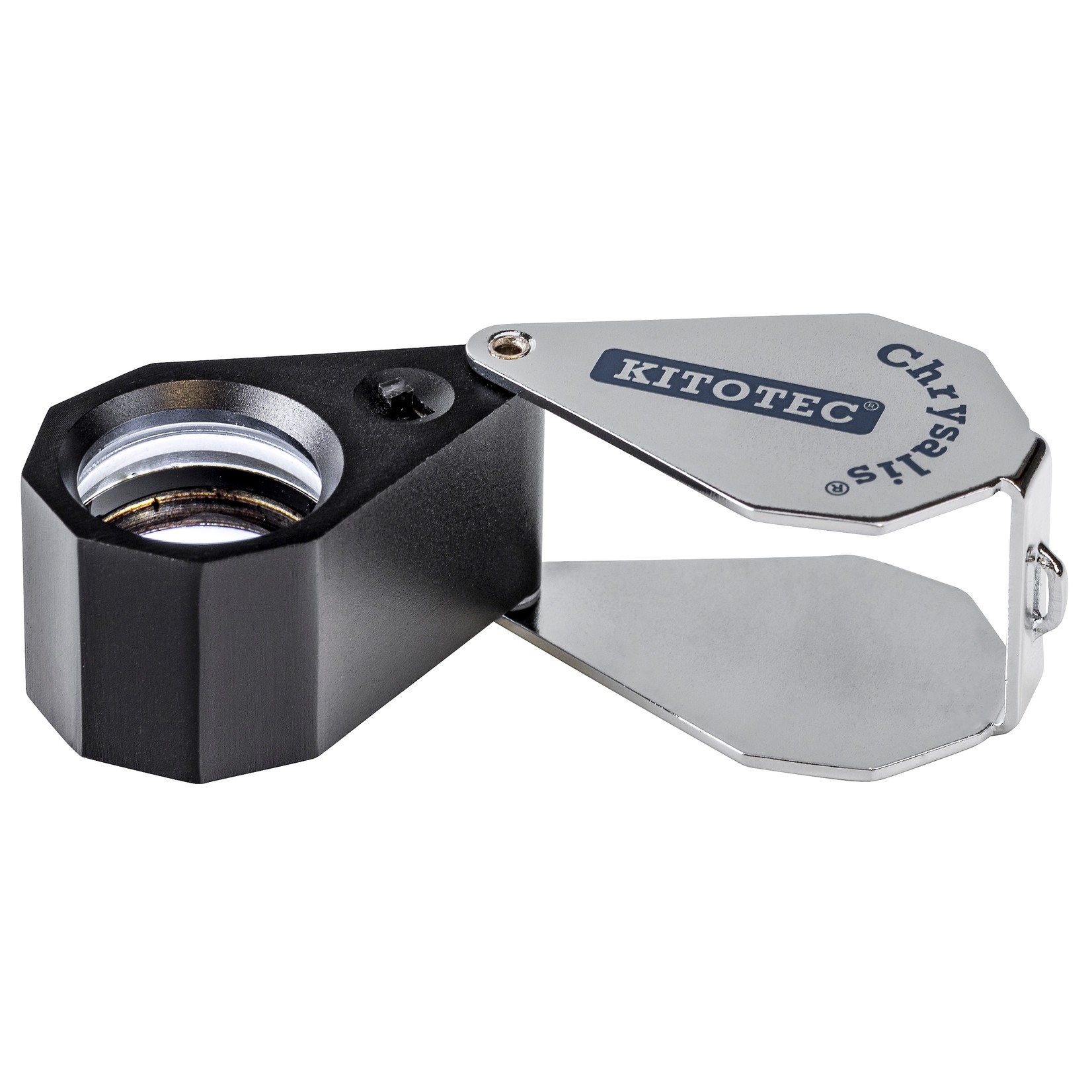Precision folding magnifier in robust all metal design with integrated LED ring illumination (consisting of 6 LED's) for shadow-free illumination. the 20.5 mm dia. lens systems used here consists of 3 achromatic, aplanatic glass lenses (colour-corrected and distortion-free). Supplied with battery and case. The aplanatic, achromatic white glass lens ensures excellent image quality. This lens is corrected for colour wave length aberration and is distortion-free all the way to the edge. With the newly developed ring illumination unit with 6 LED's this magnifier sets new standards in its price class. These aplanatic achromatic folding magnifiers have a multiple lens system guaranteeing a true-colour, distortion-free image. An apochromatic lens system combines the high edge definition of a aplanatic lens with the chromatic aberration correction of an achromatic lens, making it particularly suitable for reproducing the "true" colour of an object while guaranteeing a very good, distortion-free image.
Magnification factor 10 x
Lens dia. 20.5 mm
Focusable with working interval
Lenses Aplanatic, achromatic
Dimensions 85 x 25 x 25 mm
Weight 56 grams
Case included
The aplanatic-achromatic single-lens magnifiers are multi-lens systems that guarantee a colour-error-free and distortion-free image. An apochromat (Greek for free of colour; English: apochromatic lens) is an optical system, e.g. a lens, in which the colour error is corrected as far as possible. In contrast to an achromatic lens, not only the primary but also the secondary spectrum is corrected. In its original meaning, an apochromatic lens system is calculated in such a way that the cut width matches for three wavelengths (colours) in the visible range, whereas with the simpler achromat the match is required for only two wavelengths. For the remaining wavelengths, too, there is then only a very small deviation in the cut-off width, and the longitudinal colour error is thus very well corrected.
An apochromatic lens system combines the edge-to-edge sharpness of an aplanatic lens with the colour error correction of an achromatic lens and is therefore particularly suitable if, in addition to the very good and distortion-free representation of an object, the colour of the object is also to be represented as 'real' as possible. In addition, there is a greater working distance and considerably improved lighting conditions.



